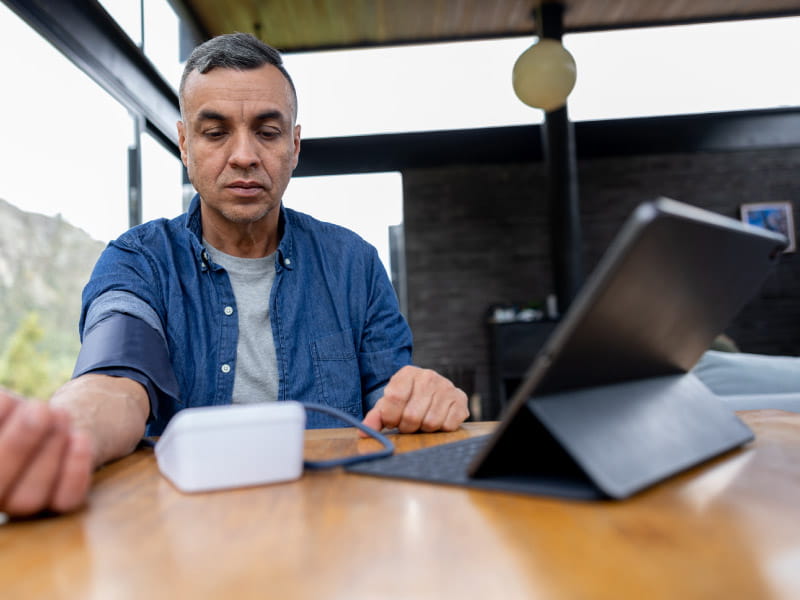Using app-based bilingual program may improve blood pressure control
By American Heart Association News

A bilingual program that connected people and health care workers via an app and at-home monitoring showed the potential of such an effort to manage high blood pressure, new research shows.
More than half of patients with uncontrolled high blood pressure brought it under control after participating in the program, according to research to be presented Saturday at the American Heart Association's Hypertension Scientific Sessions in Boston.
Patients who used the Spanish-language version of the program showed even more improvement than those who used the English-language version.
The study did not compare people who used the program with a control group that received standard care, and the work is considered preliminary until full findings are published in a peer-reviewed journal.
Dr. Irina Yermilov, the study's lead author, said in a news release that the program showed "the potential to improve outcomes and decrease rates of uncontrolled blood pressure, leading to fewer heart attacks and strokes."
Yermilov is chief medical officer of CAREMINDr, the company that created the app and funded the study.
According to AHA statistics, nearly half of adults in the U.S. have high blood pressure, or hypertension. The AHA and American College of Cardiology define hypertension as a reading that's consistently 130 mmHg and higher for systolic blood pressure or consistently 80 and higher for the diastolic measurement.
The study involved 2,500 participants from 54 federally qualified health centers, or community health clinics, in 13 states.
Patients received a phone app that prompted them to provide their blood pressure readings either daily or weekly to staff at their community health clinic. A Spanish-language version was used by 551 participants.
Home blood pressure monitors allowed patients to submit readings through the app. Patients also were provided videos on how to use the app and their monitors. The app also included links to material about nutrition and mental health.
Health care professionals at the clinics reviewed information via a web-based portal, which asked how often patients had taken their blood pressure medications; whether they had experienced any symptoms related to their medications; and whether they had any trouble getting medications.
The portal prioritized patients by level of concern based on their responses, and health care professionals could communicate with patients through the app or by phone.
Researchers analyzed data for patients who participated in the study at least 90 days. The average length of participation was 227 days.
For the study, the researchers considered blood pressure under 140/90 to be controlled. At the start of the program, 31% of patients had controlled blood pressure. By the end, 61% did.
Among patients who started with uncontrolled blood pressure, 55% achieved controlled blood pressure measurements after participating.
Among the participants who used the Spanish-language version of the app, 35% started with controlled blood pressure. After participating in the program for an average of 220 days, 70% had controlled blood pressure. When researchers looked only at Spanish-speaking participants who started the study with uncontrolled blood pressure, 2 out of 3 had controlled blood pressure by the end of the study.
The results indicate that combining remote digital monitoring with feedback from health care professionals can improve rates of blood pressure control in a real-world, at-risk population without increasing the overall cost of care, Yermilov said.
The researchers said they plan to investigate which individual characteristics of the program may be the driving factors that maximize blood pressure control.
 Login
Login





